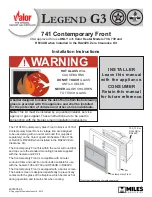
Copyright © 2013, Leatt
®
Corporation
Copyright © 2013, Leatt
®
Corporation
5
6
The size of the brace should be correct for your body shape and allow for adjustability to ensure
" / 5 ; &
""""&! '&;&
and looking side-to-side, such as when performing an over-the-shoulder check);
the 5.5 neck brace
and the helmet must come into contact with each other as the full safe range of normal riding
head movement is reached.
(5b)
If any resistance or discomfort is experienced when attempting to complete the full safe range of head
and neck movements, or if the brace does not make contact with the helmet when the full range of
! ;" 5 ; !"&=
In extreme circumstances, it may be necessary to purchase an alternative model of helmet in order
! =!" "
If the brace interferes with any of the above mentioned, please move on to the adjustment section
(p6)
. Please ask the retailer or contact Leatt
®
"=" !;5
Check that you have the right helmet rim clearance. Please use assistance to do this measurement,
do not do it yourself. Place a ruler in the middle of the upper rim of the brace at 90 to the ground, with
'!+ '+> " &?
within the zone of optimum effectiveness
(5c)
Please ensure that the brace wing tips are correctly aligned over your shoulder as shown below:
130mm
170mm
b.
1
2
0
O
5
O
10
O
15
O
Correct fitment
Neck Brace adjustment
The chest size of the brace can be adjusted by
removing the chest sizing shims on the lower front.
The front and back lower brace can be adjusted (8d) by lifting the
adjustment latch, moving the lower part to your preferred postion
and then reclipping the latch (8a,b & c).
If you feel the brace “climbing” your back. Adjust the rear thoracic by swopping the rear thoracic
angle wedges around (9a & b). The wedges are easily interchangable and their are four kinds of
wedges for different body types (9c).
To adjust the shoulder height, remove
the shoulder height adjusters
4
5
6
7
8
9
a.
a.
a.
a.
a.
c.
b.
d.
c.
b.
b.
c.
b.


























